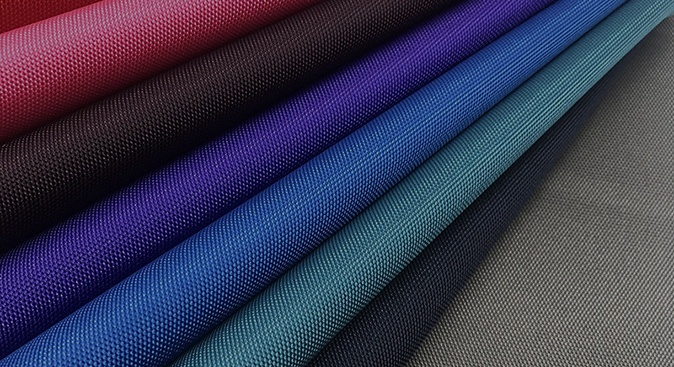Understanding PE Tarpaulin
Define
PE coated fabric refers to a type of textile material that has been coated with polyethylene (PE) resin. This coating provides the fabric with enhanced properties such as increased water resistance, durability, and protection against chemicals, oils, and other liquids. PE coated fabrics are commonly used in various industries, including manufacturing, construction, agriculture, and healthcare.
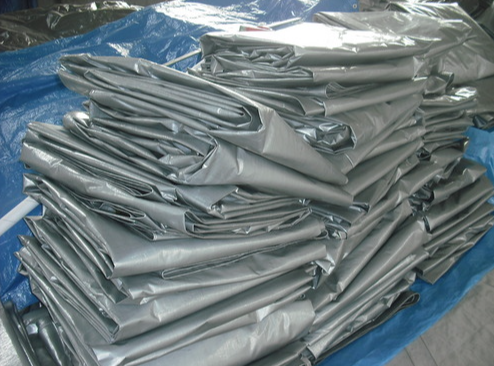
Explain the process
Fabric selection: A suitable base fabric is chosen depending on the desired properties and application of the coated fabric. Common base fabrics include polyester, nylon, cotton, or a blend of different fibers.
Pre-treatment: The selected fabric undergoes pre-treatment to remove any impurities, oils, or dirt. This step ensures proper adhesion of the PE coating to the fabric surface.
Coating application: The polyethylene resin is applied to the fabric using various methods such as roll coating, knife coating, or extrusion coating. In roll coating, the fabric passes through a pair of rollers, with one roller partially submerged in the PE resin. As the fabric moves between the rollers, the resin is evenly spread onto its surface. Knife coating involves using a blade to spread the resin onto the fabric, while extrusion coating utilizes a die to extrude the molten resin directly onto the fabric.
Curing or drying: After the PE coating is applied, the fabric is typically cured or dried to promote the bonding of the resin to the fabric fibers. This can be done through processes like heat curing, where the coated fabric is passed through an oven at a specific temperature and duration.
Additional treatments: Depending on the desired characteristics, the PE coated fabric may undergo additional treatments such as flame retardant finishing, anti-static treatment, UV resistance enhancement, or color application.
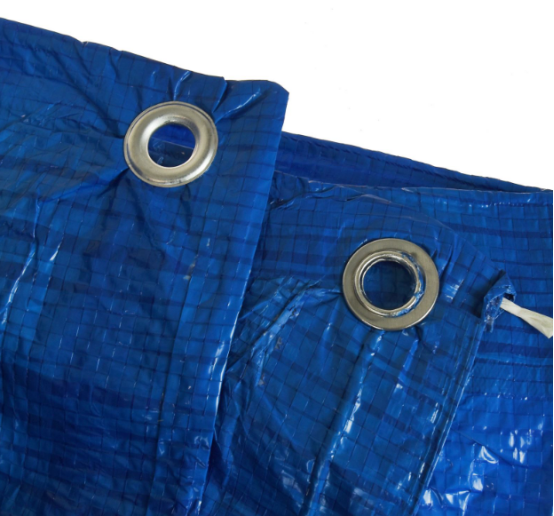
Advantages of PE Coated Fabric
Water resistance: The PE coating creates a barrier that prevents water from penetrating the fabric. It acts as a waterproof layer, keeping the underlying material dry and protecting it from moisture-related damage.
Impermeability: PE coated fabric is highly impermeable to water, meaning it does not allow water molecules to pass through. This makes it effective in applications where protection against water penetration is crucial, such as rainwear, tents, outdoor covers, and protective clothing.
Sealing properties: The PE coating creates a sealed surface that helps to prevent water from seeping through the fabric. This is particularly important in applications where a tight seal is required, such as in inflatable structures, tarpaulins, or protective barriers.
Durability: The PE coating enhances the fabric’s durability, making it more resistant to wear and tear caused by water exposure. It helps to maintain the fabric’s waterproof properties even after prolonged use, ensuring long-lasting performance.
Easy maintenance: PE coated fabric is relatively easy to clean and maintain, as the water-resistant surface allows for easy removal of dirt, stains, or spills. It can be wiped clean or washed without compromising its waterproof performance.
Versatility: PE coated fabric can be manufactured in various weights, thicknesses, and colors, offering flexibility in design and application. It can be tailored to meet specific requirements and is available in different finishes, such as matte or glossy, to suit different aesthetic preferences.
Chemical resistance: In addition to being waterproof, PE coated fabric often exhibits excellent resistance to chemicals, oils, and other liquids. This makes it suitable for applications where protection against chemical exposure is required, such as in industrial settings or chemical storage areas.
UV resistance: Some PE coated fabrics are also treated to provide UV resistance, protecting against the harmful effects of prolonged exposure to sunlight. This feature is particularly beneficial in outdoor applications, where the fabric needs to withstand sunlight and maintain its waterproof properties.
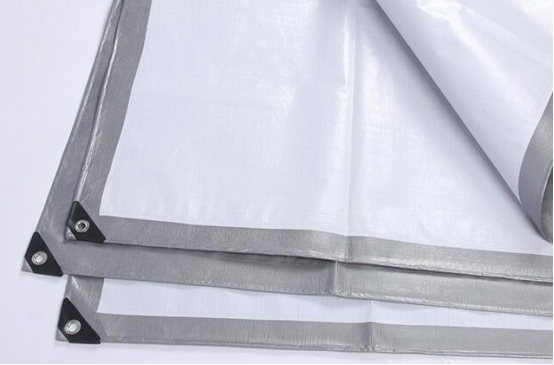
Testing and Standards for waterproof PE Coated Fabric
Industry Standards and Testing Methods
ISO 811: This standard, published by the International Organization for Standardization (ISO), specifies a method for determining the resistance of fabrics to water penetration under hydrostatic pressure. It involves subjecting the fabric to a specified amount of water pressure and assessing its resistance to water penetration.
AATCC 127: The American Association of Textile Chemists and Colorists (AATCC) standard 127 is used to determine the resistance of fabrics to water penetration by impact. It involves spraying water onto the fabric at a specified rate and assessing its ability to resist water penetration.
AATCC 42: This standard determines the water resistance of fabrics using a rain test apparatus. The fabric is subjected to a simulated rain shower for a specific duration, and its ability to repel water is evaluated.
ASTM D751: This ASTM International standard covers the determination of the water resistance of flexible laminated materials used for protective clothing and other applications. It involves subjecting the fabric to a specific hydrostatic pressure and assessing its resistance to water penetration.
JIS L 1092: This Japanese Industrial Standard specifies the testing method for determining the water resistance of fabrics. It involves subjecting the fabric to a specific hydrostatic pressure and evaluating its resistance to water penetration.
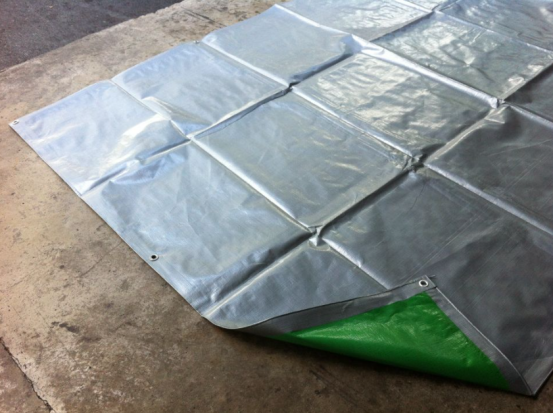
Key Tests
Hydrostatic pressure test: This test measures the fabric’s ability to resist water penetration under a specified hydrostatic pressure. It involves applying increasing pressure to the fabric and determining the point at which water begins to penetrate.
Spray test: In this test, the fabric is exposed to a water spray at a specific rate and pressure. The test evaluates the fabric’s ability to repel water and prevent it from penetrating the surface.
Seam leakage test: This test examines the seam integrity of the fabric by subjecting the seams to water pressure and assessing for any signs of leakage. It ensures that the seams are adequately sealed and do not compromise the fabric’s waterproof performance.
Certifications
OEKO-TEX Standard 100: This certification ensures that the fabric has been tested for harmful substances and meets strict human-ecological requirements. It confirms that the fabric is safe to use and does not pose any health risks.
EN 343: This European standard specifies the requirements for protective clothing against foul weather, including rain. It evaluates the fabric’s resistance to water penetration and breathability, among other factors.
ASTM International certification: ASTM International offers various certifications for fabrics, including those related to waterproofing. These certifications indicate that the fabric has been tested and meets specific ASTM standards for water resistance.
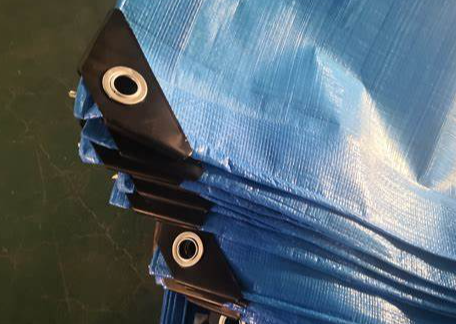
Benefits for luggage factories and fabric distributors
Durability and Longevity
PE coated fabric is known for its enhanced durability compared to untreated fabrics. The polyethylene resin coating provides added strength and resistance to wear and tear, making it suitable for luggage manufacturing. This ensures that luggage made from PE coated fabric can withstand frequent use, rough handling, and transportation without easily showing signs of damage or deterioration.
Waterproof
PE coated fabric’s waterproof properties make it an ideal choice for luggage manufacturing. The coating acts as a protective barrier, preventing water and other liquids from seeping into the luggage, thus safeguarding the contents. This is especially important for travel purposes, as luggage may be exposed to rain, spills, or other wet conditions.
Easy Maintenance and Cleanliness
PE coated fabric is relatively easy to clean and maintain, which is advantageous for luggage factories and end-users alike. The waterproof surface allows for simple wiping or spot cleaning to remove dirt, stains, or spills. This convenience saves time and effort in luggage upkeep, ensuring that the luggage remains clean and presentable.
Versatility and Design Options
PE coated fabric offers versatility in terms of design and customization. It can be manufactured in various weights, thicknesses, and colors, providing flexibility to luggage manufacturers and designers. This enables them to create luggage with different aesthetic options to meet market demands and cater to specific customer preferences.
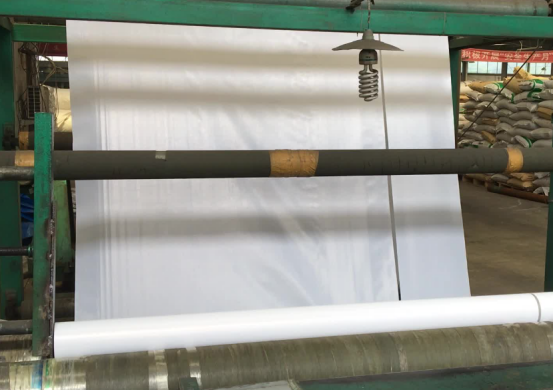
How to choose waterproof PE coated fabric
Durability and Strength
Look for PE coated fabric that offers high durability and strength. Consider the intended use of the fabric and ensure it can withstand the expected conditions and stresses it will be subjected to. Evaluate the fabric’s tear resistance, abrasion resistance, and overall toughness to ensure it can withstand frequent use and harsh environments.
Testing and Certification
Consider fabrics that have undergone testing according to industry standards and have relevant certifications. This ensures that the fabric has been evaluated for its waterproof performance and meets specific quality requirements. Look for certifications such as ISO 811, AATCC 127, or ASTM D751 to verify the fabric’s waterproof capabilities.
Supplier Selection
Choose a reputable and reliable supplier or manufacturer for your waterproof PE coated fabric. Research and evaluate their track record, industry reputation, and customer reviews. Ensure they have experience and expertise in producing high-quality coated fabrics. A trustworthy supplier will provide detailed information about the fabric’s specifications, testing, and certifications, helping you make an informed decision.

Quality control measures
Raw Material Inspection
Inspecting the raw materials used in the production of PE coated fabric is an essential quality control step. This involves checking the quality, specifications, and suitability of the base fabric and the polyethylene resin used for coating. The base fabric should meet the required standards for strength, weave consistency, and fiber composition. The polyethylene resin should be of high quality and appropriate for the intended application. Conducting thorough inspections helps identify any defects or deviations from the desired standards early on, allowing for corrective actions to be taken.
Coating Thickness Measurement
The thickness of the polyethylene resin coating on the fabric is an important factor in determining the fabric’s waterproof performance. Quality control involves regularly measuring and monitoring the coating thickness throughout the manufacturing process. This is typically done using specialized equipment such as coating thickness gauges. By ensuring consistent and accurate coating thickness, manufacturers can maintain the desired waterproof properties of the fabric. Deviations from the specified thickness can be addressed promptly, avoiding variations in performance and maintaining quality standards.
Conclusion
In conclusion, waterproof PE coated fabric offers numerous advantages in terms of durability, waterproofing, easy maintenance, cleanliness, versatility, and design options. Its polyethylene resin coating provides enhanced strength and resistance to wear and tear, making it suitable for various applications, including luggage manufacturing. The waterproof properties of PE coated fabric protect against moisture and ensure the safety and integrity of the contents.
The fabric is relatively easy to clean and maintain, saving time and effort. Its versatility allows for customization and meeting diverse design preferences. When choosing waterproof PE coated fabric, factors such as durability, testing and certification, supplier selection, application-specific requirements, and cost should be considered. Quality control measures, including raw material inspection, coating thickness measurement, adhesion testing, and performance testing, are crucial in ensuring the reliability and performance of the fabric.
By carefully selecting and maintaining the quality of waterproof PE coated fabric, manufacturers can produce high-quality products that meet the needs and expectations of their customers.



